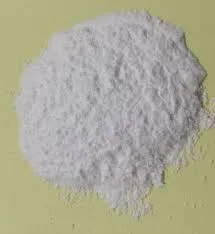- Afrikaans
- Albanian
- Amharic
- Arabic
- Armenian
- Azerbaijani
- Basque
- Belarusian
- Bengali
- Bosnian
- Bulgarian
- Catalan
- Cebuano
- Corsican
- Croatian
- Czech
- Danish
- Dutch
- English
- Esperanto
- Estonian
- Finnish
- French
- Frisian
- Galician
- Georgian
- German
- Greek
- Gujarati
- Haitian Creole
- hausa
- hawaiian
- Hebrew
- Hindi
- Miao
- Hungarian
- Icelandic
- igbo
- Indonesian
- irish
- Italian
- Japanese
- Javanese
- Kannada
- kazakh
- Khmer
- Rwandese
- Korean
- Kurdish
- Kyrgyz
- Lao
- Latin
- Latvian
- Lithuanian
- Luxembourgish
- Macedonian
- Malgashi
- Malay
- Malayalam
- Maltese
- Maori
- Marathi
- Mongolian
- Myanmar
- Nepali
- Norwegian
- Norwegian
- Occitan
- Pashto
- Persian
- Polish
- Portuguese
- Punjabi
- Romanian
- Russian
- Samoan
- Scottish Gaelic
- Serbian
- Sesotho
- Shona
- Sindhi
- Sinhala
- Slovak
- Slovenian
- Somali
- Spanish
- Sundanese
- Swahili
- Swedish
- Tagalog
- Tajik
- Tamil
- Tatar
- Telugu
- Thai
- Turkish
- Turkmen
- Ukrainian
- Urdu
- Uighur
- Uzbek
- Vietnamese
- Welsh
- Bantu
- Yiddish
- Yoruba
- Zulu
11 月 . 04, 2024 13:44 Back to list
Exploring the Benefits and Uses of Kitasamycin Tartrate in Modern Medicine
Kitasamycin Tartrate An Overview of Its Use and Benefits
Kitasamycin tartrate, a member of the macrolide antibiotic family, is gaining attention in both the pharmaceutical and clinical settings for its unique properties and therapeutic benefits. Originally derived from the fermentation of the bacterium *Streptomyces griseolus*, kitasamycin has earned its place as an important drug in the treatment of various bacterial infections, particularly in respiratory and throat conditions.
Chemical Characteristics and Properties
Kitasamycin is characterized by its complex macrolide structure, which features a large lactone ring. This structure contributes to its mechanism of action, targeting bacterial protein synthesis by binding to the 50S ribosomal subunit. The tartrate salt form enhances its solubility in water, making it more bioavailable when administered. This solubility is critical in ensuring that adequate concentrations of the antibiotic reach the systemic circulation, maximizing therapeutic efficacy.
Mechanism of Action
The core function of kitasamycin involves inhibiting bacterial growth by obstructing peptide bond formation during protein synthesis. This action is particularly effective against certain Gram-positive bacteria, as well as some atypical pathogens. The ability of kitasamycin to disrupt protein synthesis means that it can effectively combat various bacterial infections, including those caused by *Streptococcus pneumoniae*, *Haemophilus influenzae*, and several mycoplasma species. Its relevance in treating respiratory tract infections, such as bronchitis and pneumonia, cannot be overstated.
Therapeutic Applications
kitasamycin tartrate

Kitasamycin is primarily used for its antibacterial properties, but it has also shown promise in treating other conditions. In clinical practice, it is often prescribed for patients who exhibit allergies or intolerances to conventional antibiotics, such as penicillins. Its effectiveness in treating difficult-to-manage infections further highlights its versatility as a therapeutic agent. Additionally, its anti-inflammatory properties can add to its clinical utility, particularly in chronic respiratory diseases where inflammation plays a significant role.
Safety and Side Effects
While kitasamycin is generally well-tolerated, as with any medication, it is not without potential side effects. Common adverse effects include gastrointestinal disturbances, such as nausea and diarrhea, which are typical for many antibiotics. In rare cases, patients may experience allergic reactions or liver function abnormalities. Due to possible interactions with other medications, it is important for healthcare providers to consider patient history and concomitant medications before prescribing kitasamycin.
Resistance Concerns
As with all antibiotics, the emergence of resistance poses a significant threat to the efficacy of kitasamycin. Overuse and misuse of antibiotics can lead to the development of resistant strains of bacteria, which complicates treatment regimens. It is crucial for healthcare providers to follow guidelines on antibiotic stewardship and only prescribe kitasamycin when absolutely necessary to combat the spread of resistant infections.
Conclusion
Kitasamycin tartrate represents a valuable tool in the arsenal against bacterial infections, particularly for patients who cannot tolerate first-line antibiotic therapies. Its unique mechanism of action, along with its effectiveness in treating a range of respiratory and other bacterial infections, underscores its importance in modern medicine. However, proper use and awareness of potential resistance are vital to maintaining its efficacy. As research continues to explore the full potential of kitasamycin and its derivatives, it is likely that it will find even broader applications in various therapeutic settings, further solidifying its role in combating infectious diseases. In summary, kitasamycin tartrate is not just an antibiotic; it is a critical component of respiratory health management and an essential ally in the fight against bacterial infections.
-
The Power of Radix Isatidis Extract for Your Health and Wellness
NewsOct.29,2024
-
Neomycin Sulfate Soluble Powder: A Versatile Solution for Pet Health
NewsOct.29,2024
-
Lincomycin Hydrochloride Soluble Powder – The Essential Solution
NewsOct.29,2024
-
Garamycin Gentamicin Sulfate for Effective Infection Control
NewsOct.29,2024
-
Doxycycline Hyclate Soluble Powder: Your Antibiotic Needs
NewsOct.29,2024
-
Tilmicosin Premix: The Ultimate Solution for Poultry Health
NewsOct.29,2024













